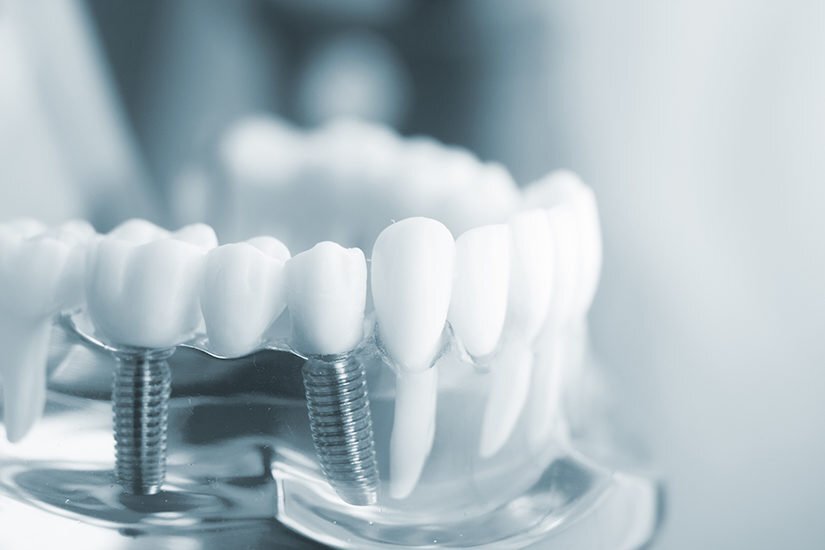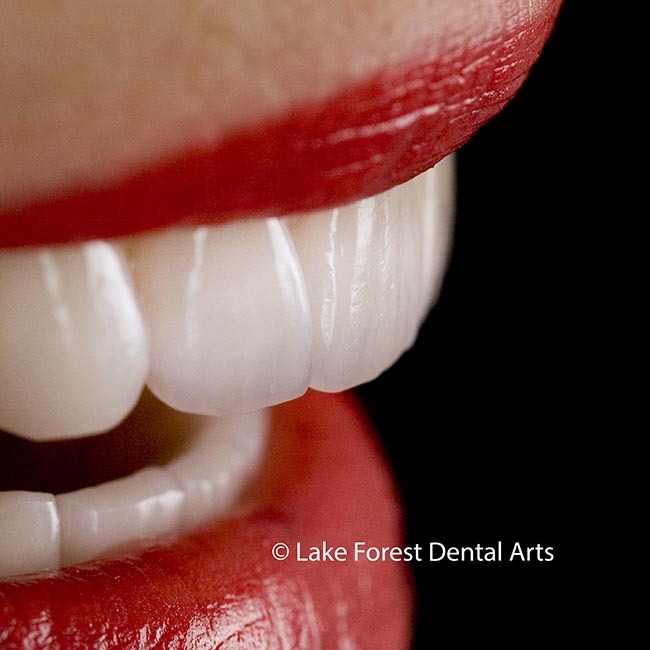Why Are Dental Crowns So Expensive: – Dental crowns are expensive due to the customized craftsmanship and high-quality materials required. The process also involves skilled dental professionals and laboratory technicians.
Dental crowns are a crucial investment in oral health, often necessary for restoring damaged teeth or enhancing a tooth’s appearance. This procedure demands a dentist’s expertise and the use of advanced technology to ensure a perfect fit and natural look.
High-grade materials like porcelain, ceramic, or precious metals, which are durable and mimic natural teeth, contribute to the cost. The dental crown process is meticulous, involving multiple stages of preparation, impression taking, temporary crown placement, and, finally, the precise installation of the permanent crown. This level of personalized care and the associated laboratory fees result in a higher price point. Understanding the value of a long-lasting solution for dental issues can help patients appreciate the investment in a dental crown.
The Significance Of Dental Crowns
Dental crowns play a crucial role in modern dentistry. They restore damaged teeth and protect dental health. Their cost reflects their importance and the complex process of crafting them. But why are they so crucial, and what makes them so expensive?
Essential Role In Dental Health
Dental crowns serve as a protective cap for your teeth. They prevent further damage and can save a tooth that might otherwise need removal. A crown can help a tooth regain its strength, size, and form. Additionally, it makes the teeth look better. The main advantages of dental crowns are as follows:
- Protect weak teeth from breaking
- Hold together parts of a cracked tooth
- Support and conceal a huge filling in a tooth.
- Hold a dental bridge in place
- Cover misshapen or severely discolored teeth
- Cover a dental implant
Varieties And Uses
Not all crowns are the same. They come in different materials, each with its own cost. Here’s a brief overview:
| Type of Crown | Material | Uses |
|---|---|---|
| Porcelain | Ceramic | Front teeth natural look |
| Gold | Metal alloy | Durable back teeth |
| Porcelain-fused-to-metal | Porcelain & Metal | Strong front or back teeth |
| Zirconia | Zirconium dioxide | Extra strength, any tooth |
Each type of crown serves a unique purpose. Porcelain offers a natural look. Gold and metal alloys provide extra strength. Porcelain-fused-to-metal combines strength with a natural appearance. Zirconia is highly durable and suitable for any tooth.

Credit: www.singhsmilecare.com
Materials Matter
Materials Matter when considering the cost of dental crowns. The type of material used directly affects the price, durability, and aesthetic appeal. Different materials cater to various needs, from strength to natural appearance. Understanding these options can shed light on the high costs associated with dental crowns.
Gold, Porcelain, And More
Dental crowns come in various materials. Each offers unique benefits. Gold crowns are known for strength. Porcelain crowns match natural teeth. There are also porcelain-fused-to-metal crowns for durability and a natural look.
Material Costs And Durability
The cost of materials for dental crowns is a critical factor in their overall expense. High-quality materials like gold and porcelain contribute to a higher price tag. These materials are durable and long-lasting, so they are a significant investment in oral health.
| Material | Cost | Durability |
|---|---|---|
| Gold | High | Very Durable |
| Porcelain | High | Durable |
| Porcelain-Fused-to-Metal | Moderate | Durable with a natural look |
- Gold crowns are biocompatible and wear down slowly.
- Porcelain crowns offer a color match to existing teeth.
- Porcelain-fused-to-metal crowns balance cost and appearance.
Durability means fewer replacements. This saves money over time. High initial costs reflect the long-term value of quality crowns.
Craftsmanship And Customization
Craftsmanship and Customization play crucial roles in the high cost of dental crowns. Each crown is not just a product; it’s a personalized art piece designed to match and enhance individual dental profiles.
The Art Of Creating A Crown
Creating a dental crown is a detailed process that blends art and science. Dental technicians meticulously craft each crown to ensure it fits perfectly and resembles natural teeth. This process involves:
- Material selection: Choices include ceramic, porcelain, and gold, each offering different benefits.
- Color matching: Technicians select shades that match the surrounding teeth for a seamless look.
- Shaping and sculpting: Each crown is shaped to align with the bite and aesthetic of the patient’s smile.
Tailoring To Individual Needs
No two crowns are identical, and tailoring them to individual needs is essential. This customization involves:
- Detailed impressions: Dentists take precise molds of the patient’s existing teeth.
- Bite analysis ensures the crown will not affect the patient’s chewing or speaking.
- Personal adjustments: Post-fitting adjustments are shared to achieve the perfect fit.
This individual attention to detail ensures each crown is unique and functional for each patient.

Credit: www.amddentalclinic.com
Dental Expertise And Labor
Understanding why dental crowns have a hefty price tag requires looking into the dental expertise and labor involved. A significant portion of the cost reflects the dentist’s time, skills, and specialization necessary for this dental procedure. High-quality care ensures the crown fits perfectly and functions like a natural tooth.
The Dentist’s Time
Dentists invest substantial time in each crown procedure. This time includes patient consultation, tooth preparation, and the actual fitting. Here’s how the process generally breaks down:
- Initial Consultation: The dentist examines your tooth and discusses treatment options.
- Preparation: They carefully reshape the tooth to fit the crown.
- Impression Making: A mold of your tooth is created for the crown.
- Temporary Crown: A temporary solution is placed while the permanent crown is made.
- Final Fitting: The dentist secures the crown and ensures proper bite alignment.
Skills And Specialization
Crafting a crown requires expert skills and specialization. Dentists undergo years of education and continuous training to master this. The expertise involved includes:
| Specialization | Description |
|---|---|
| Precision | Creating a crown that fits seamlessly with the surrounding teeth. |
| Aesthetics | Matching the crown to the natural color and shape of your teeth. |
| Functionality | Ensuring the crown allows for comfortable chewing and speaking. |
Laboratory Fees And Technology
Dental crowns carry a reputation for their high cost. Much of this cost comes from laboratory fees and the advanced technology involved. Skilled technicians and cutting-edge equipment are crucial in creating a crown that fits perfectly and looks natural.
Behind The Scenes: Lab Work
Lab technicians are artists in their own right. They craft each crown precisely, ensuring it blends seamlessly with a patient’s natural teeth. Here’s a breakdown of what the lab fee covers:
- Materials: High-quality ceramics and metals.
- Equipment: Specialized tools for accurate results.
- Time: Each crown requires hours of meticulous work.
The labor and expertise behind every crown justify the lab costs.
Innovations In Crown Fabrication
The dental industry has witnessed remarkable technological advancements. These innovations aim to improve precision and durability while reducing manual labor.
| Technology | Benefit |
|---|---|
| 3D Printing | Faster production |
| CAD/CAM Software | Improved accuracy |
| Digital Imaging | Better fit and comfort |
These tech-driven processes contribute to the cost but ensure crowns that last for years.
Geographical Pricing Variations
Understanding the geographical pricing variations of dental crowns can be quite enlightening. It’s not just the materials or the dentist’s expertise determining the cost. Where you live plays a significant role, too. Let’s explore how your location impacts the price of getting a dental crown.
Cost Discrepancies By Region
The price for dental crowns can vary widely depending on the region. Dental services often come with a heftier price tag in affluent neighborhoods or high-cost living areas. Conversely, regions with lower living costs may offer more affordable dental care options. This is due to several factors, including the cost of living, local economic conditions, and competition among dental practices.
- High-cost areas: Higher overhead costs for dental practices
- Lower-cost areas: More competitive pricing to attract patients
City Vs. Rural Dental Expenses
In cities, dental practices face higher rent and operational costs, which often translates to more expensive dental services. Rural areas might offer lower prices, but they might not have the same access to advanced dental technology or materials. Additionally, the number of available dentists in rural areas is usually lower, which can affect the price due to lack of competition.
| Location | Typical Costs | Factors |
|---|---|---|
| City | Higher | Operational costs, technology access |
| Rural | Lower | Competition, technology limitations |
Insurance And Coverage Complexities
Dental crowns are a significant investment for many due to insurance and coverage complexities. Understanding the intricacies of dental plans and out-of-pocket costs can be a challenge. But why does this impact the overall cost of dental crowns? Let’s dive into the details.
Navigating Dental Plans
Dental insurance plans can be tricky to navigate. They often come with a range of limitations and stipulations that can affect coverage for dental crowns. Factors such as waiting periods, annual maximums, and the percentage of coverage can significantly influence the amount your insurance will pay.
- Annual maximums may limit the amount insurance pays in a year.
- Waiting periods can delay coverage for specific procedures.
- The percentage of coverage varies, often covering less for crowns.
Out-of-pocket Costs
When insurance falls short, out-of-pocket costs come into play. These expenses can quickly add up, making dental crowns seem expensive. Factors like deductibles, co-payments, and non-covered services must be considered.
| Deductible | Co-payment | Non-covered Services |
|---|---|---|
| The amount paid before insurance kicks in | A fixed amount paid for a covered service | Services not covered by insurance at all |
Each of these factors can vary significantly between different dental plans and impact the final cost of your dental crown.
Longevity And Value Over Time
Dental crowns offer long-term benefits for oral health. They provide not just immediate relief but also long-lasting value. Understanding the longevity and value over time of dental crowns can explain their high cost.
Investment In Oral Health
Dental crowns protect and strengthen teeth. Here are key points:
- Prevent damage: Crowns shield weak teeth from breaking.
- Restore function: They help chew and speak clearly.
- Avoid further procedures: Crowns reduce the need for future dental work.
Comparing Initial Costs To Lifetime Value
The initial cost of dental crowns might seem high. Yet, their long-term benefits show great value. See the comparison below:
| Cost Element | Initial Cost | Lifetime Value |
|---|---|---|
| Material and Labor | $800 – $1500 | 10+ years of durability |
| Preventive Benefits | High upfront | Lesser dental fixes later |
This table highlights that crowns are a wise long-term investment.

Credit: lakeforestdentalarts.com
Frequently Asked Questions
Why Is A Crown For Teeth So Expensive? or Why are Dental Crowns So Expensive?
Dental crowns are costly due to the custom craftsmanship, high-quality materials, and multiple dentist visits required for a precise fit and durable finish.
Are Dental Crowns Worth The Money?
Dental crowns can be a valuable investment for restoring damaged teeth, enhancing smile aesthetics, and improving oral function. Their durability and protective qualities often justify the cost.
How Much Do Most Dentists Charge For A Crown?
The cost for a dental crown typically ranges between $1,000 and $3,500, depending on materials used and regional pricing variations.
Is There Anything Cheaper Than A Crown?
Dental fillings and onlays are generally cheaper than crowns for restoring teeth.
Conclusion
Understanding dental crown costs involves recognizing their long-term value and the expertise required for placement. Despite the initial investment, crowns protect and enhance dental health, justifying their price. Researching options and discussing with your dentist can lead to cost-effective solutions.
Embracing the expense of quality care ensures a beautiful and resilient smile.

Hello there! I’m here to assist you with health tips and tricks. Whether you’re looking to boost your energy, improve your sleep, or enhance your overall well-being, I’m here to guide you with strategies and frameworks that can empower you to make positive changes.
First and foremost, it’s important to understand that health is a holistic concept encompassing various aspects of physical, mental, and emotional well-being.

